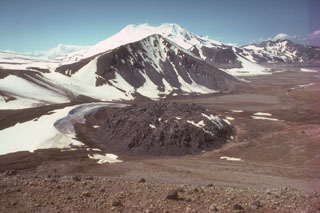Report on Novarupta (United States) — 11 May-17 May 2011
Smithsonian Institution / US Geological Survey
Weekly Volcanic Activity Report, 11 May-17 May 2011
Managing Editor: Sally Sennert.
Please cite this report as:
Global Volcanism Program, 2011. Report on Novarupta (United States) (Sennert, S, ed.). Weekly Volcanic Activity Report, 11 May-17 May 2011. Smithsonian Institution and US Geological Survey.
Novarupta
United States
58.2655°N, 155.1588°W; summit elev. 841 m
All times are local (unless otherwise noted)
Based on analysis of satellite imagery, pilot observations, KVERT reports, and information from AVO, the Anchorage VAAC reported that on 11 May strong winds in the Katmai area re-suspended loose ash deposited during the 1912 eruption. The Volcano Alert Level remained at Normal and the Aviation Color Code remained at Green.
Geological Summary. Novarupta, the least topographically prominent volcano in the Katmai area, was formed during a major eruption in 1912. This eruption was the world's largest during the 20th century and produced a voluminous rhyolitic airfall tephra and the renowned Valley of Ten Thousand Smokes (VTTS) ash flow. At the end of the eruption a small, 65-m-high, 400-m-wide lava dome grew within the source vent of the VTTS ashflow, a 2-km-wide area of subsidence NW of Trident volcano. The NE side of the Falling Mountain lava dome of the Trident volcanic cluster, as well as Broken Mountain and Baked Mountain, was removed by collapse of the Novarupta depression, which is marked by radial and scalloped arcuate fractures. Much larger collapse took place at Katmai volcano, 10 km E, where a 3 x 4 km caldera formed in response to magma reservoir drainage toward Novarupta.

